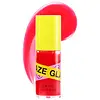What's inside
What's inside
 Key Ingredients
Key Ingredients

No key ingredients
 Benefits
Benefits

 Concerns
Concerns

 Ingredients Side-by-side
Ingredients Side-by-side

Polyglyceryl-2 Isostearate/Dimer Dilinoleate Copolymer
EmollientDilinoleic Acid/Propanediol Copolymer
EmollientVitis Vinifera Seed Oil
EmollientCarthamus Tinctorius Seed Oil
MaskingMel
EmollientSimmondsia Chinensis Seed Oil
EmollientHelianthus Annuus Seed Oil
EmollientLimnanthes Alba Seed Oil
Skin ConditioningAroma
Calendula Officinalis Flower Extract
MaskingOenothera Biennis Oil
EmollientRosa Canina Fruit Oil
EmollientHydrogenated Castor Oil/Sebacic Acid Copolymer
EmollientPropolis Cera
AntiseborrhoeicTocopheryl Acetate
AntioxidantTocopherol
AntioxidantSodium Hyaluronate
HumectantCitrus Aurantium Bergamia Fruit Extract
Skin ConditioningDaucus Carota Sativa Root Extract
Skin ConditioningMauritia Flexuosa Fruit Oil
Skin ConditioningVaccinium Myrtillus Seed Oil
Skin ConditioningGlucomannan
Skin ConditioningEthylhexyl Palmitate
EmollientTrihydroxystearin
Skin ConditioningCitral
PerfumingLinalool
PerfumingLimonene
PerfumingCI 15985
Cosmetic ColorantCI 45410
Cosmetic ColorantPolyglyceryl-2 Isostearate/Dimer Dilinoleate Copolymer, Dilinoleic Acid/Propanediol Copolymer, Vitis Vinifera Seed Oil, Carthamus Tinctorius Seed Oil, Mel, Simmondsia Chinensis Seed Oil, Helianthus Annuus Seed Oil, Limnanthes Alba Seed Oil, Aroma, Calendula Officinalis Flower Extract, Oenothera Biennis Oil, Rosa Canina Fruit Oil, Hydrogenated Castor Oil/Sebacic Acid Copolymer, Propolis Cera, Tocopheryl Acetate, Tocopherol, Sodium Hyaluronate, Citrus Aurantium Bergamia Fruit Extract, Daucus Carota Sativa Root Extract, Mauritia Flexuosa Fruit Oil, Vaccinium Myrtillus Seed Oil, Glucomannan, Ethylhexyl Palmitate, Trihydroxystearin, Citral, Linalool, Limonene, CI 15985, CI 45410
Saccharomyces/Lithospermum Erythrorhizon Root Oil Ferment Filtrate
Skin ConditioningPolyglyceryl-2 Isostearate/Dimer Dilinoleate Copolymer
EmollientHydrogenated Polyisobutene
EmollientPolyglyceryl-2 Triisostearate
EmulsifyingSimmondsia Chinensis Seed Oil
EmollientSilica Dimethyl Silylate
EmollientAroma
Dipalmitoyl Hydroxyproline
Skin ConditioningDehydroacetic Acid
PreservativePunica Granatum Seed Oil
EmollientStevioside
MaskingPyrus Malus Fruit Extract
Skin ConditioningWater
Skin Conditioning1,2-Hexanediol
Skin ConditioningCI 15985
Cosmetic ColorantCI 15850
Cosmetic ColorantBenzyl Alcohol
PerfumingLimonene
PerfumingSaccharomyces/Lithospermum Erythrorhizon Root Oil Ferment Filtrate, Polyglyceryl-2 Isostearate/Dimer Dilinoleate Copolymer, Hydrogenated Polyisobutene, Polyglyceryl-2 Triisostearate, Simmondsia Chinensis Seed Oil, Silica Dimethyl Silylate, Aroma, Dipalmitoyl Hydroxyproline, Dehydroacetic Acid, Punica Granatum Seed Oil, Stevioside, Pyrus Malus Fruit Extract, Water, 1,2-Hexanediol, CI 15985, CI 15850, Benzyl Alcohol, Limonene
 Reviews
Reviews

Alternatives
Ingredients Explained
These ingredients are found in both products.
Ingredients higher up in an ingredient list are typically present in a larger amount.
Aroma refers to an ingredient, or mixture of ingredients, that impart or mask a flavor.
The name is slightly confusing. This is because INCI associates aroma with flavor instead of smell.
Here is the official definition from the The International Cosmetic Ingredient Dictionary and Handbook:
“Aroma is a term for ingredient labeling used to identify that a product contains a material or combination of materials normally added to a cosmetic to produce or to mask a particular flavor.”
INCI shows the only purpose of aroma to be "flavouring".
However, due to regulation differences, some companies may use aroma in place of parfum.
In Canada, this ingredient only has to be listed in concentrations above 1%.
Learn more about AromaCi 15985 is a dye made from petroleum. It is synthetically created and approved by the FDA for use in foods and cosmetics.
The color of this dye is orange/yellow.
This ingredient can be found in makeup, sun care, and skincare.
Learn more about CI 15985Limonene is a fragrance that adds scent and taste to a formulation.
It's found in the peel oil of citrus fruits and other plants such as lavender and eucalyptus. The scent of limonene is generally described as "sweet citrus".
Limonene acts as an antioxidant, meaning it helps neutralize free radicals.
When exposed to air, oxidized limonene may sensitize the skin. Because of this, limonene is often avoided by people with sensitive skin.
The term 'fragrance' is not regulated in many countries. In many cases, it is up to the brand to define this term. For instance, many brands choose to label themselves as "fragrance-free" because they are not using synthetic fragrances. However, their products may still contain ingredients such as essential oils that are considered a fragrance.
Learn more about LimoneneWe don't have a description for Polyglyceryl-2 Isostearate/Dimer Dilinoleate Copolymer yet.
This oil comes from the seeds of the desert shrub called Jojoba. It is more commonly known as jojoba oil, a non-comedogenic oil.
Jojoba oil does not contain fragrance and has many fatty-acids, making it a great soothing ingredient.
It also contains Vitamin E, a great moisturizing ingredient. Vitamin E is also an antioxidant and protects your skin against oxidative damage.
This ingredient humectant properties, meaning it helps draw moisture from the air. This helps keep your skin hydrated.
While jojoba has antibacterial properties, it is only able to kill some strains of bacteria.
Studies also show it helps in wound healing. In fact, Indigenous cultures have used jojoba as a moisturizer and to help treat burns for centuries.
Fun fact: Jojoba oil similar to natural human skin sebum, so it has a great effect on dry skin. It is also promising with helping to regulate sebum production.
Due to its fatty acid content, Jojoba oil may not be fungal acne safe. We recommend speaking with a professional if you have any concerns.
Learn more about Simmondsia Chinensis Seed Oil